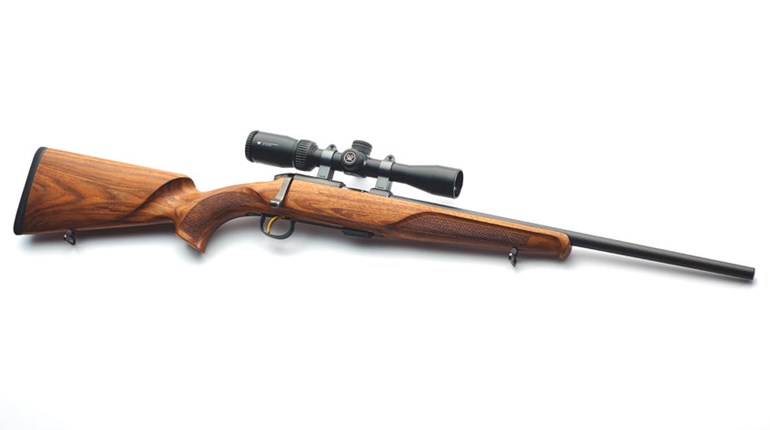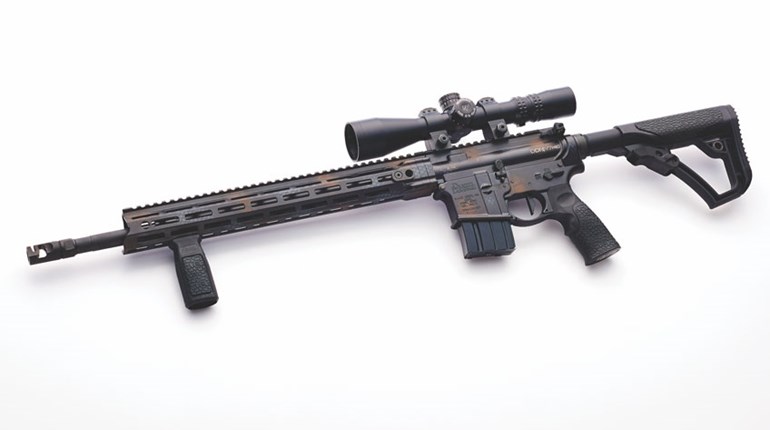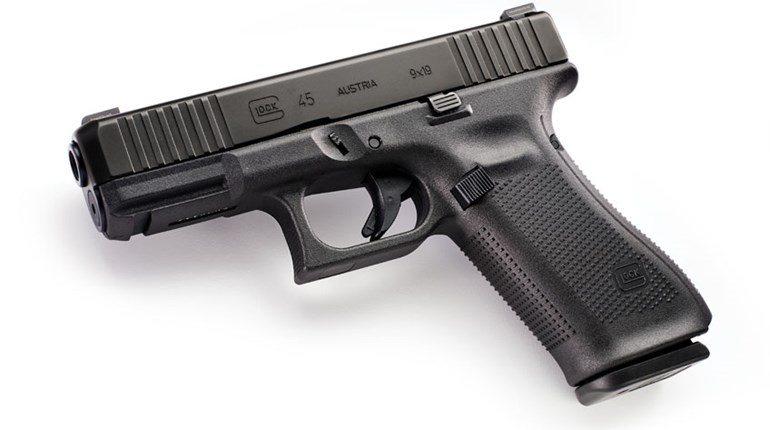
While we’d be the last to say too much has been written about the two most elemental factors in good handgun technique—sight picture and trigger press—we follow why some folks might disagree. There is a “mess” of it out there, and some contributed by us. And it is really important: The rare, so-called “natural” handgunner may be able to scoop up any old pistol and go to safe, effective, speedy work, but you can just as easily go a shooting lifetime without ever personally encountering one of these fortunate wonders. They’re that unusual.
The flip side of this is something we’ve called the “physical democracy” of handgun skills. Especially with modern semi-autos, a remarkable variety of physical types can learn to use a handgun within those same parameters—safely, etc. This is so because handgun shooting rewards diligent practice like almost nothing else does.
When it comes to the Carry Life and defensive/protective employ, that physical democracy multiplies—just convincingly presenting a firearm has unrivaled dissuasive power excepting, perhaps, already-present law enforcement. Off the record, a vast preponderance of folks who’ve “seen the elephant” agree: The suggested equality of baseball bats, tasers, and cellphones (particularly silly, this last) can’t hold a candle to a firearm when it comes to real world, right-here-and-now self-defense. The only thing better is a repeating long gun. Interestingly, some experts suggest this extends to actually preventing violence too, but that’s for another time.
So how does this get us to the importance for head position when we shoot? More easily than you might think, if you take seriously that “convincing” part of presentation in extremis. Nor is convincing appearance the only parameter: Good head position lets you shoot with noticeably better speed and precision if, in the end, a shot or shots become a life-saving necessity. Here are some things to consider.
Head Position Won’t Fix Poor Body Position, Except When It Does
If that sounds like a big bill to fill, consider: If you’ve adopted a head tilt rearwards, chances are your entire stance is adversely affected. This can happen for a number of reasons, though two predominate.
Good head position lets you shoot with noticeably better speed and precision if, in the end, a shot or shots become a life-saving necessity.The first is optical in nature. Especially for older shooters, the ability to bring the front sight into focus can be improved by tilting the head back. Even slight increases/adjustments of eye-to-front sight distance will improve the effectiveness of corrective measures for shooters of any age (glasses, contacts, even un-aided but imperfect vision, etc.). That’s a good thing, as far as it goes, for getting a good sight picture, but with a substantive downside—watch somebody do this, and you’ll almost always see them hunt for an optimum tilt. It requires no explanation that this is slow, imprecise and difficult-to-repeat.
A second cause for the head-back aspect is a sort of “pre-flinch.” This is most often indicative of apprehension about recoil, slide action (if a self-loader) or both.
Solving the first cause of the tilt is a shooting glasses or sighting technology issue. For the optics part of the problem, you’ll probably have a bullet to bite: Find an ophthalmologist who works with shooters and start seeing him or her. Ours has you bring your primary arm—scrupulously checked for clear, of course—and precisely measures and prescribes based on that data. Get that prescription filled and use it rigorously, and you’ll discover that the whole “fuzzy target/sharp sights” thing is true: Because your correction is now optimized for the specific eye-to-sight distance, the brain and hands will generally take care of speeding a repeatable synchronization.
Some shooters fix the whole vision thing quite admirably by going to a red dot/reflex type of sight. These work with your distance prescription—if you have one—and the technology is mature enough to be worthy of your defensive wherewithal.
The pre-flinch is generally a different matter, but with a somewhat more obvious solution—rimfire. Go—or go back—to the lightest recoiling firearm you can arrange.
Beware the double-whammy here, too: Gun movement and optical issues can be mutually and disadvantageously reinforcing.
The goal in either case is to get the head and neck upright, steady and very slightly tensed forward. This will get the shoulders over the balls of the feet (instead of over the hips), and create that muscle tension forward posture that is crucial to maintaining balance through multiple shots, as well as an athletic-like position from which you can sure-footedly “get off the ‘X’” of any aggressor.
Beware the “Tactical Turtle"
Here, the head is too far forward in our view, though it is a much less serious failure than craning away. It is common for two reasons, neither of which is wrong per se.
Many military and law enforcement shooters were (and are) taught this way mainly to reduce their target profile, and to arguably protect the vital head and neck. It’s also a natural “stress response” posture, so why fight it, or so the theory went.

Respectfully, here’s why: This has two body components chasing a dynamic equilibrium, in nearly opposite directions. The head is moving down to the hands and pistol sightline, while the hands/arms are moving the firearm up to the eyes. There is almost no positive allegory for this: Do outfielders move their heads behind their gloves, or wide receivers their heads behind their hands? No. In both cases, they move the hands to intercept the sightline, and in most cases the head remains (often astonishingly) still, even at a dead run.
In multiple target situations, there’s also a disadvantage in the (advantageous) quest to get the eyes moving ahead of the gun to a second or subsequent target. In general, the shoulder-head system is untensed to facilitate swiveling the head, movement occurs, and then it is re-tensed for the shot itself. It’s slow. There’s also a slight tendency to swivel at the waist to achieve the angular/azimuthal change, rather than at the knees.
Is tactical turtle wrong? Decidedly no; you’ll see it in use by some very good—and very fast—shooters. But in the higher reaches of pistol instruction, it looks to us as though its deficiencies are more and more widely recognized, and it is therefore being taught less and less. If this is how you were taught and can execute it well, soldier on, so to speak. It may do more harm than good to try and change.
Two observational/instructional notes here: Keeping the head erect and bringing the arms up a tad higher to align the sights/optics with the eye can elevate the shoulders in a way that looks like tac turtle. In such cases, it’s better to observe a shooter from behind for a real assessment of excessive downward/forward head movement.
The tactical drop of the head can also be associated with what we believe are too-straight arms or a very aggressive Isosceles. Very straight arms in either case may seem to invitingly nestle the chin/head between the biceps for greater stability, but we think this is slow illusion.
Our Recommendation
Happily, this is simple. As we said earlier, an upright head with slight forward tension of the neck are best. It’s strong, and most important, repeatable. This posture also tends to move the center of mass of the body forward slightly, and gets you over the balls of your feet (flat-footed is less desirable, but really don’t be back on your heels). This is a better position from which to initiate flight—to cover or concealment—or to just plain run like hell, all of which should be preferred to engagement if you can safely avoid it.

There’s a downside to our head position thoughts: Not all of them can apply to every shooter for the obvious reason that folks are physically different. Getting to the best head position for you is frequently compounded in some cases by appearances in others. One of the worst of these is a confusion already identified: Shoulders rising up being mistaken for head dropping down. If you have a shortish neck, this is exaggerated. Long arms over-extended may create a vision issue. You get the idea: Careful disassembly of what’s really happening matters a lot. A good instructor can be indispensable as always, but a pal with an out-of-the-firing line smartphone vid can help a lot too.
So move your head as little as possible as you line up those sights, and Carry on.
Frank Winn has been studying arms and their relationship to tyranny, meaningful liberty and personal security all his adult life. He has been a firearms safety/shooting instructor for more than 20 years, and earned state, regional and national titles in several competitive disciplines.
































